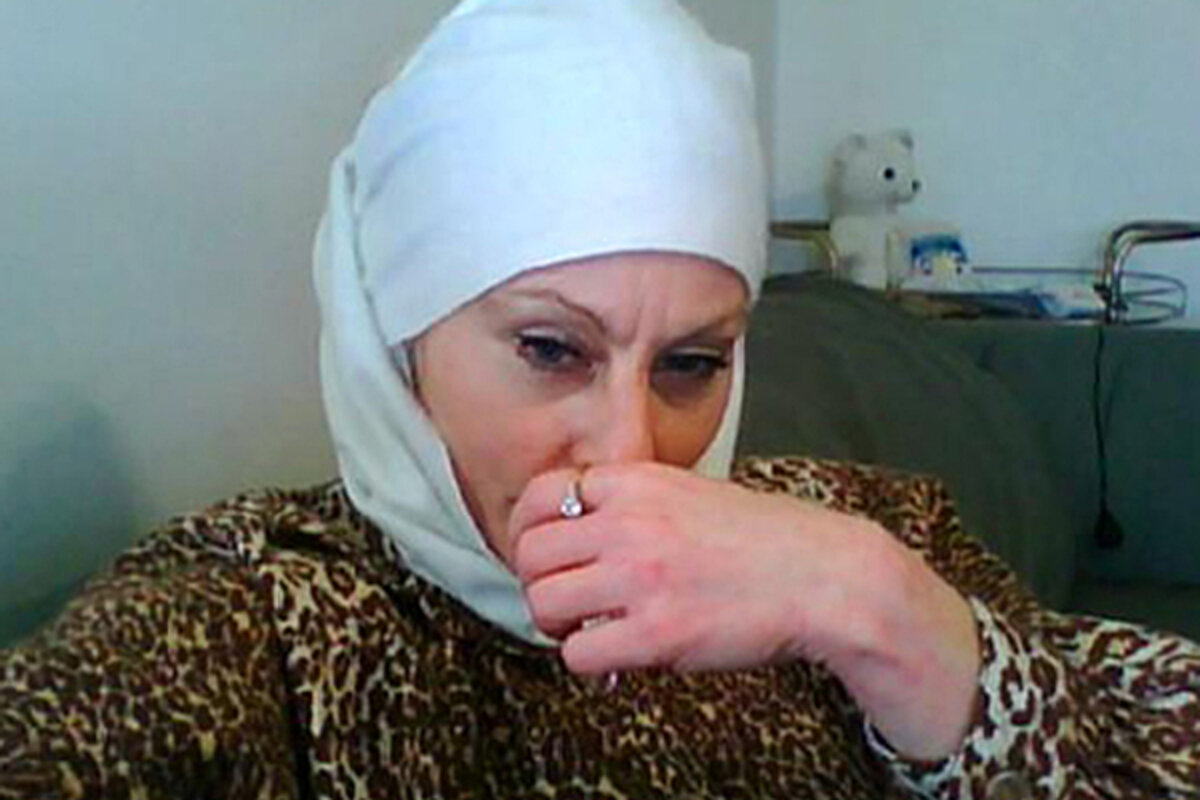'Jihad Jane' joins growing list of American terror suspects
Loading...
They were born and raised all over the United States. Indiana, Oregon, and New Mexico. Alabama, Virginia, Michigan, and Washington, D.C.
Some have foreign-sounding names. Others were as familiar as Daniel and John, David and Colleen. But they were all US citizens, and all had become sworn enemies of the United States, radical Islamist jihadis who plotted to carry out – and sometimes succeeded in – attacks that killed fellow Americans.
Most recently, it was Colleen LaRose, the blond, middle-aged woman from a Philadelphia suburb who dubbed herself “Jihad Jane.”
“This case ... demonstrates that terrorists are looking for Americans to join them in their cause, and it shatters any lingering thought that we can spot a terrorist based on appearance,” Michael Levy, the US attorney for the Eastern District of Pennsylvania, said in a statement regarding the charges against Ms. LaRose, which include conspiracy to provide material support to terrorism and conspiracy to commit murder overseas.
Over the past year, more than 30 American citizens have been charged with terrorist-related acts, says Oren Segal, director of Islamic affairs at the Anti-Defamation League’s Center on Extremism.
Among the notable cases from the past year, Mr. Segal notes, are:
•Abdulhakim Mujahid Muhammad, an American Muslim convert, shot two uniformed American soldiers – one of whom was killed – at a military recruiting center in Little Rock, Ark., on June 1, 2009.
•Five American students were detained in Pakistan in December for apparently attempting to join terrorist groups fighting against US-led forces in Afghanistan.
•Four Muslim converts – three American and one Haitian – were arrested in May for an alleged plot to attack two synagogues in the Bronx and to shoot down planes at a military base in Newburgh, N.Y.
•David Headley, an American citizen from Illinois, was arrested in October for plotting a terrorist attack in Denmark. He has also been charged with helping plan the November 2008 terror attacks in Mumbai (Bombay) that killed more than 170 people.
“American Muslim extremists are not just a serious domestic terror threat,” says Segal. “The US is exporting militants, armed with radical interpretations of Islam and US passports, overseas at an alarming rate. In addition to David Headley, the Virginia students, and others, there has been a wave of Americans traveling to Somalia to fight with Al Shabab, an Al Qaeda-linked terrorist group.”
Internet facilitates recruitment
The experiences of “Jihad Jane” and others show how advances in online communication have made it easier to recruit Americans to radical Islam.
“They have really improved their ability to radicalize people and bring them into the fight, which of course severely hampers our ability to disrupt and get ourselves involved in the process,” said Garry Reid, deputy assistant secretary of Defense, in testimony before a Senate panel recently.
A prime example, experts point out, is Omar Hammami, a 25-year-old US citizen from Alabama, who has become a primary recruiter for Al Shabab.
“Hammami is one of several American Muslim ideologues living abroad using their online pulpits to reach and influence extremists in the US with ideologies of extreme intolerance and violence,” says Segal. But he also notes that the two most deadly recent attacks were done by “lone wolves,” apparently operating on their own and therefore more difficult for intelligence and law enforcement authorities to detect and stop.
These were the attack at the military recruiting office in Arkansas by American Muslim convert Abdulhakim Mujahid Muhammad, and the attack at Fort Hood, Texas, by suspected shooter Maj. Nidal Malik Hasan, an Army psychiatrist. (Officials have not characterized the shootings at Fort Hood, in which 13 people were killed, as an act of terrorism.)
While both Mr. Muhammad and Hasan were known to have been influenced by radical Muslims, the extent to which the violence with which they’re charged was tied to any personal psychosis – perhaps more than any recruiting effort – is unclear.
That’s the difficulty with lone wolves, as it is with the pilot who flew his aircraft into an IRS office building in Texas and the man who recently shot Pentagon police officers before being killed.
“It’s notable that a lot of these folks are converts, and many are also people who have underlying social, behavioral, or psychological issues,” says Brian Levin, director of the Center for the Study of Hate and Extremism at California State University, San Bernardino. “They’re easier to recruit because they don’t know the real rules of the faith.”
For many, says Mr. Levin, “it’s as much about social and psychological distress as it is about radical ideology.
“But that doesn’t really matter to those who are trying to recruit them,” he adds.
Women radicals a new phenomenon
American women as part of the radical Islamist threat are a relatively new phenomenon.
In 2003, October Martinique Lewis was sentenced to three years in prison for providing financial support – money laundering and sending funds abroad – to six men who conspired to help Islamic radicals fighting US forces in Afghanistan.
Together, they were called the “Portland Seven.” (Lewis was the ex-wife of one of the men in what the FBI called a terrorist cell that sought to fight against US-led forces in Afghanistan.)
More recently, two other women have been charged in the US with terror violations. They are lawyer Lynne Stewart, convicted of helping imprisoned Sheikh Omar Abdel Rahman communicate with his followers, and Aafia Siddiqui, a Pakistani scientist found guilty of shooting at US personnel in Afghanistan while yelling, “Death to Americans!”
Neither case involved the communicating with fellow Islamists and the plotting with which LaRose is charged.
Meanwhile, there’s growing concern among mainstream Islamic organizations, which are scrambling to catch up with the recruitment of young American Muslims to radicalism.
“What we’re seeing is the increase of radical views espoused on the Internet,” says Ibrahim Hooper, communications director at the Council on American-Islamic Relations (CAIR), which has 32 chapters in 20 states and one in Canada.
CAIR is organizing an effort to present a mainstream perspective on Islam to young Americans – especially young Muslims – using the Internet, including streaming video and social media such as Twitter and Facebook.
As the story of “Jihad Jane” and other radical American Muslims unfolds, it’s clear that the issue has become a top priority for law enforcement and intelligence officials. As the FBI put it in a December 2009 statement, “The radicalization of US citizens by jihadist recruiters abroad is a very real and growing concern that the FBI and the US government as a whole must deal with.”




